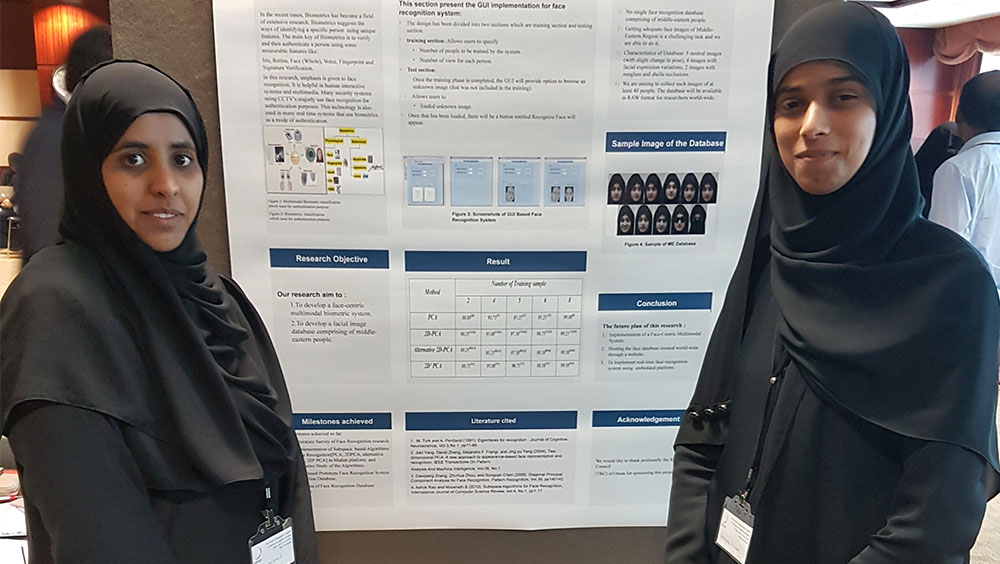
Muscat: Two Omani students are busy developing the first facial recognition system to be made by Arabs.
Graduates of the Sohar College of Applied Sciences, the two are developing a facial recognition programme to identify people by recording their facial features and matching them with their pre-recorded information culled from a database.
“The significance of the project is mainly related to security. The system created functions, which would recognise people entering government institutions, airports, or borders stations,” said Omayma Al Naabi, one of the researchers.
“We wanted to make a project involving biometrics, specifically facial biometrics, and so we focused on different features of the face in order to determine what differentiates one person from another,” Al Naabi added.
The first phase of the project involved “compiling a programme that is the first of its kind in the Middle East, as this programme does exist around the world, for instance in Japan and in Canada, but it has not been programmed by Arabs,” said Asma Al Kanoni, the other researcher.
“The reason we think that other parts of the world have trouble with programming an electronic facial system for us is that when a girl wears a scarf, the surface area of her face reduces. Additionally, the Arab man is more likely to have more facial hair and thus this can disrupt the systems’ feature calculation,” explained Al Naabi.
“We looked at four different algorithms and selected the best out of them, then implemented the algorithms in a programme. For the second phase, a graphical user interface was created to compare the algorithms by analysing the first three facial expressions. Once that was done, the team created a database for the students of Sohar College of Applied Sciences, then applied the four programmes of the first phase,” stated Al Kanoni.
Finally, the research team incorporated a new programming language that included systems used to create a facial recognition device. The collected database sample combined the facial photos of 31 students (22 females and nine males). A total of 332 different facial expressions were created.
The researchers also participated in the Annual Conference on Undergraduate Research on Applied Computing at the Sheikh Zayed University in Dubai. Last year, the project won first place at the third edition of The Research Council award for student research.
Previously funded by The Research Council, research for the project started in 2015, and by 2016 the team began working on it. Still in the works, the team is missing some training in embedded systems.
Al Naabi outlined the team’s future plans for the project. “Our plans for the future is to further study embedded systems and to try and implement this programme of a visual project into reality, from offline to online, and even hopefully be able to distribute it to institutions.”